- Architecture
A 17th century Catholic Church built in the Baroque style, and located just off the Ramblas.
Where the Ramblas meet Calle del Carmen, you’ll find the Church of Our Lady of Belen, a Catholic church built in the Baroque style during the 17th century.
The original structure, erected in 1553, was part of the College of Our Lady Belen, the first institute of higher learning run by the Jesuits. But that’s not the structure that you’ll find there today, because in 1671 it burned down in a fire and had to be rebuilt. Designed by Josep Juli under the direction of the Jesuits Francisco Tort and Pau Diego de Lacarre, architect and sculptor, respectively, it was reconstructed between 1680 and 1729, although the interior decoration was not completed until 1855. When the Jesuits were expelled from Spain in 1767, the building was converted into a parish of the Diocese. In 1936, during the Spanish Civil War, it was set on fire, losing to the flames its ornate Baroque interior embellishment.
The temple, which continues to be the model for churches of the Jesuit Counter-Reformation, is based on Rome’s Church of the Gesù, with just one nave, situated parallel to the Rambla, with a semi-circular apse and lateral chapels. The nave is divided into six bays, with a narthex under the choir, covered by a cylindrical vault with lunettes. The lateral chapels are interconnected, each with elliptical cupolas.
The main façade, on Calle del Carmen but visible from the Rambla, features an elegant arched roof, and the doors are framed by spiral columns, embellished with sculptures of Jesuit Saints Ignatius of Loyola and Fransisco de Borja, deftly carved by Andreu Sala. The façade also displays the work of Francesc Santacruz, who designed the scene of the Nativity etched above the door, as well as an alcove with a rendering of Jesuit San Francisco Javier towards the left side, at the corner with Calle Xuclà.
The side façade abutting the Rambla is laid in rhombus-relief carved stones which extend all the way to the lower part of the main façade, as well as two doors. One is crowned by an image of the Divine Infant, the work of Francesc Santacruz, and the other is a more contemporary copy, designed in 1906 under the direction of Enric Sagnier and embellished with an image of the Infant Saint John the Baptist.


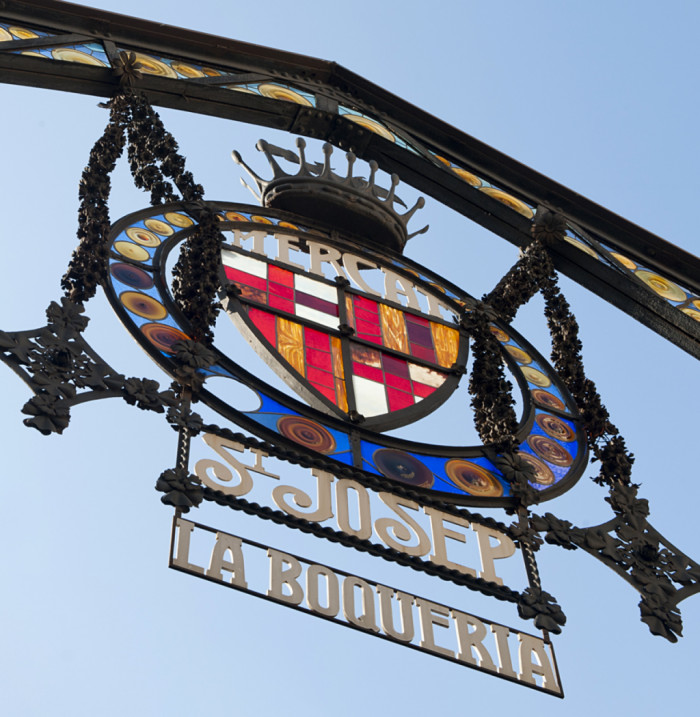

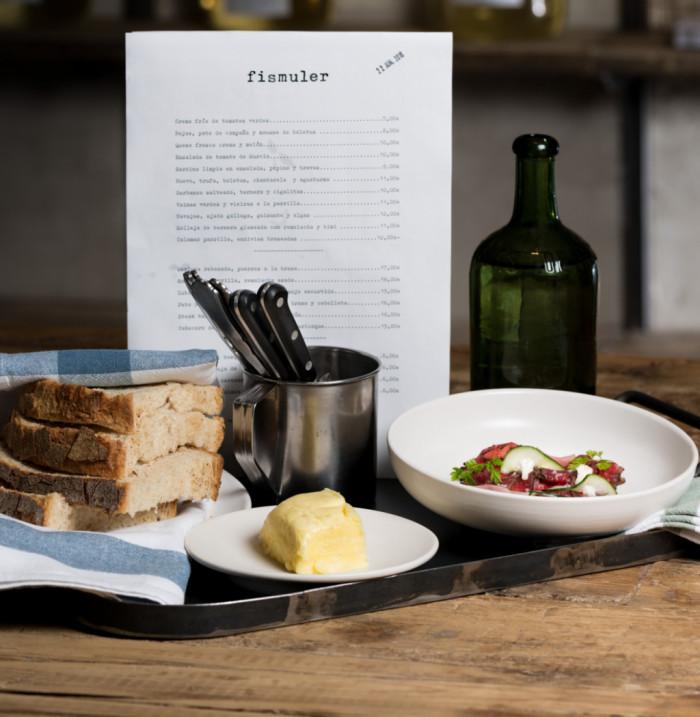

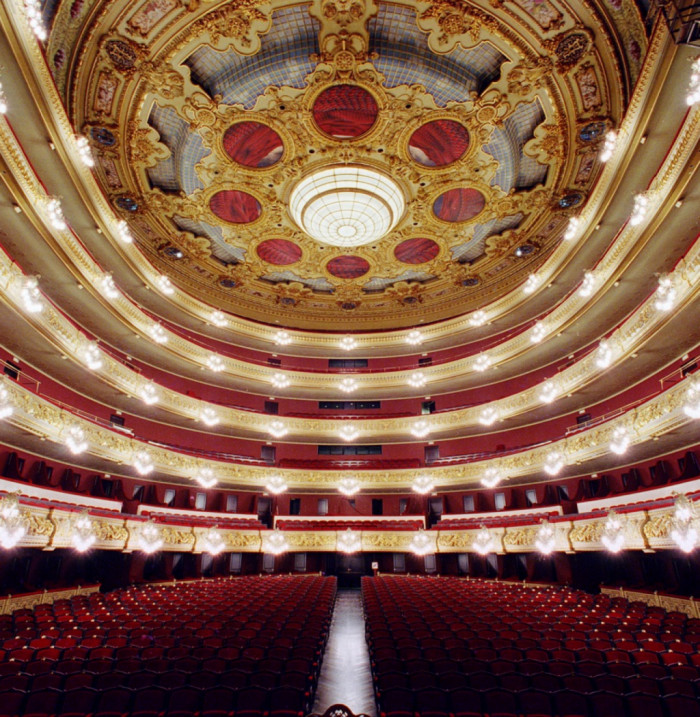
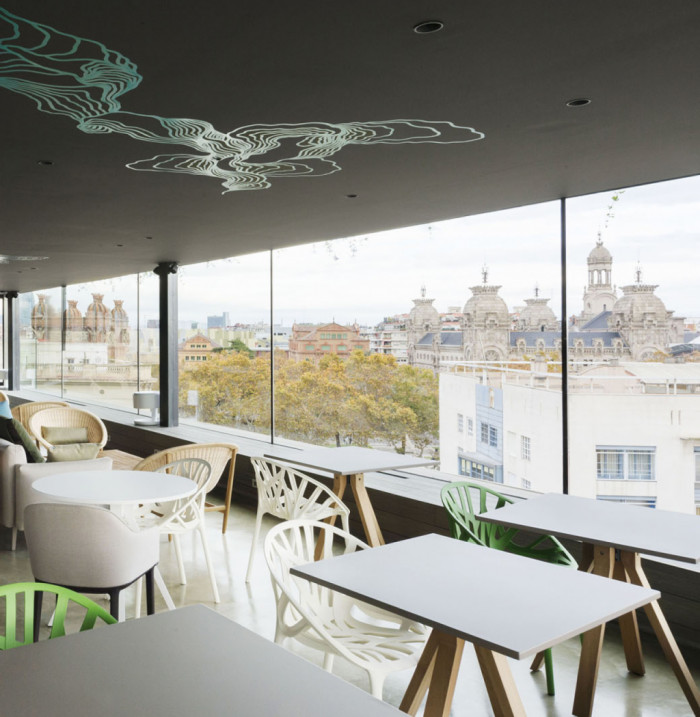
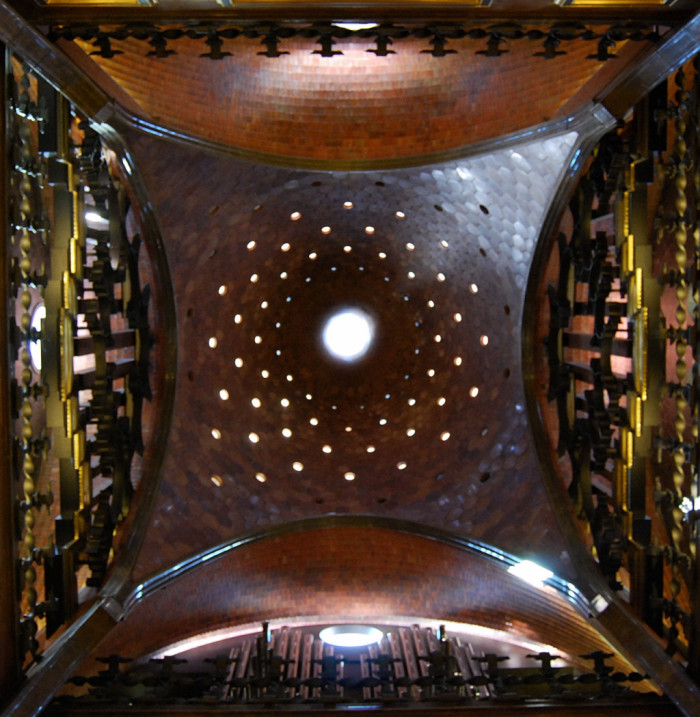
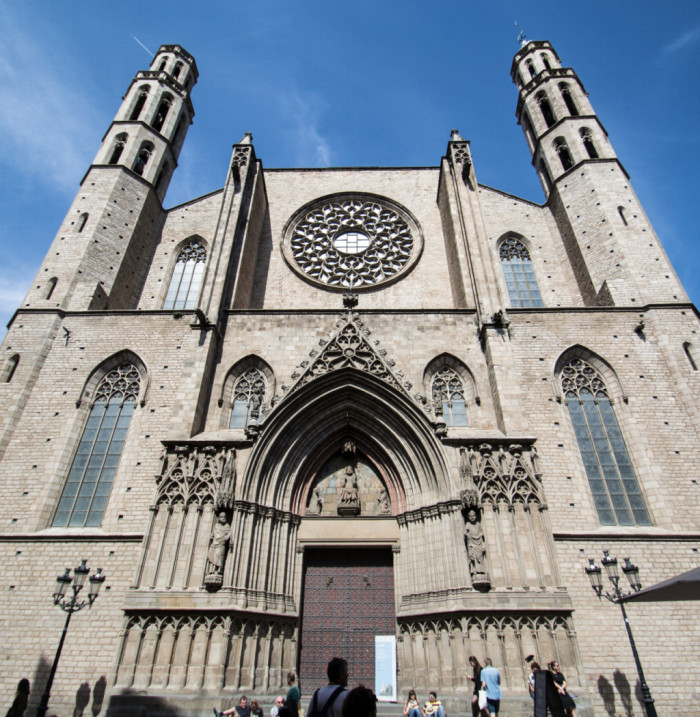
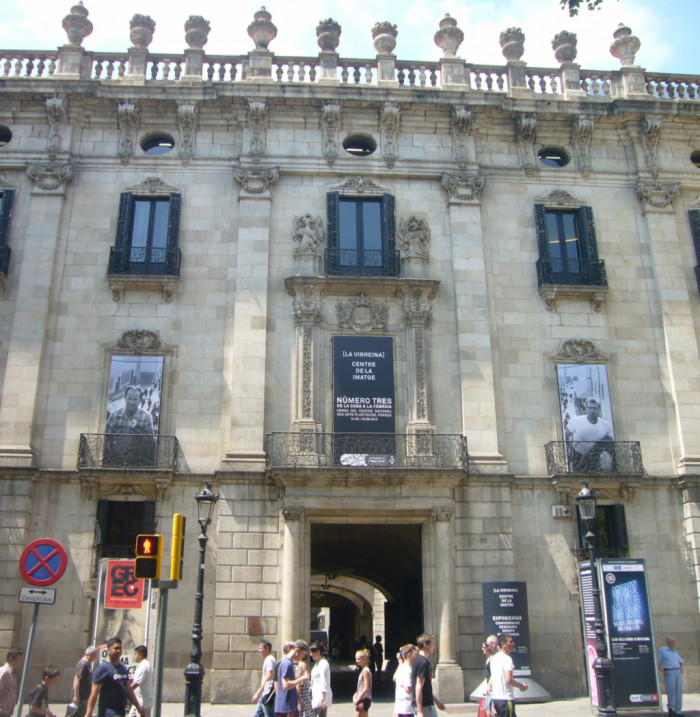
Fuimos a visitar esta iglesia que se encuentra cerca de la rambla y nos gustó mucho. Tiene un estilo distinto dentro de las iglesias de Barcelona, de interior simple y de tamaño mas chico que las demás. La visita fue gratis.
Una bella iglesia de estilo Barroca con un gran retablo dorado, en su entrada esta presidida por dos estatuas monumentales.